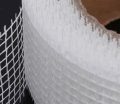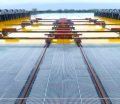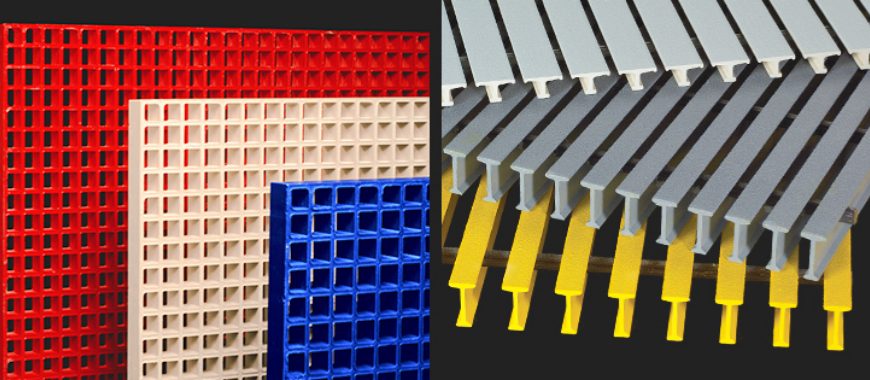
Fiberglass Reinforced Plastic (FRP) grating is a composite material manufactured by combining a matrix of resin and fiberglass. This versatile and durable product is widely used in industrial and architectural applications for its superior strength to weight ratio. Understanding the frp grating weight is crucial for engineers and architects as it affects not only the ease of installation and handling but also impacts transportation costs and the structural load capacity. Accurately assessing the frp grating weight ensures that project specifications are met without compromising safety or performance. Whether used in walkways, platforms, or as coverings, knowing the weight details can lead to a more efficient and cost-effective implementation of FRP grating solutions in various environments.
How FRP Grating Weight Affects Performance and Applications
FRP (Fiber Reinforced Plastic) grating is a lightweight, durable, and corrosion-resistant material commonly used in industrial and commercial settings. The weight of FRP grating is a critical factor that influences its performance, usability, and applications. Here’s a detailed breakdown of how FRP grating weight impacts various aspects:
Structural Load and Safety
- Lightweight Advantage: The lower weight of FRP grating compared to traditional materials like steel reduces the overall structural load. This makes it ideal for installations in areas where load restrictions are critical, such as offshore platforms or elevated structures.
- Load Capacity: While FRP grating is lightweight, it is engineered to support significant loads. The weight and density of the grating should be matched to the specific load-bearing requirements to ensure safety and functionality.
Ease of Installation and Maintenance
- Handling and Transport: Lightweight FRP grating is easier to handle and transport, reducing labor costs and the need for heavy machinery during installation.
- Customization: The reduced weight allows for easier cutting, drilling, and modification on-site, enabling precise adjustments without compromising strength.
Corrosion Resistance and Longevity
- Material Composition: The weight of FRP grating can be an indicator of its resin-to-fiber ratio, which affects its resistance to corrosion, chemicals, and UV exposure.
- Performance in Harsh Environments: Lighter FRP grating may be more suitable for environments where frequent replacement is impractical due to its long-lasting durability.
Cost Efficiency
- Material Costs: Lightweight grating often requires less raw material, making it more cost-effective to produce and ship.
- Energy Savings: In applications where FRP grating is part of a moving structure (e.g., in conveyor systems), its reduced weight can lower energy consumption.
Applications and Suitability
- Industrial Use: In industrial settings like chemical plants, lightweight FRP grating is preferred for walkways and platforms due to its strength-to-weight ratio and non-conductive properties.
- Marine and Offshore: The low weight is advantageous for marine environments, reducing the impact on buoyancy and enabling easier retrofitting on ships and rigs.
Design Flexibility
- Customization Options: Lightweight FRP grating is available in various thicknesses, panel sizes, and patterns, making it suitable for diverse applications without compromising on aesthetic or functional requirements.
The weight of FRP grating significantly affects its practicality, performance, and application scope. By balancing weight with strength, manufacturers and engineers can optimize FRP grating for specific needs, ensuring safety, durability, and cost-effectiveness.
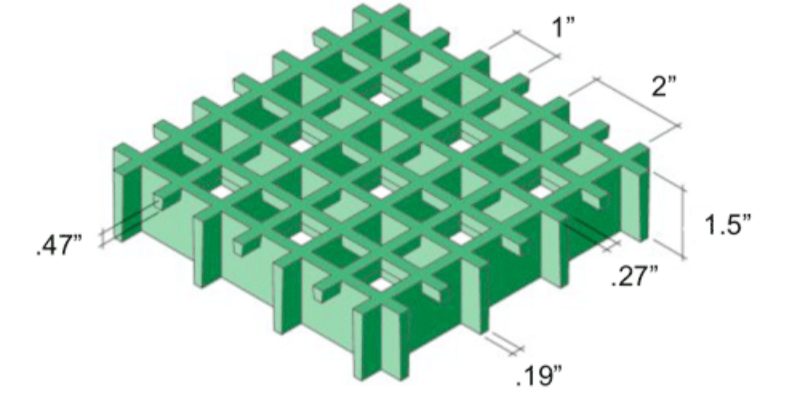
What Determines the Weight of FRP Grating?
The frp grating weight is influenced by several key factors which can significantly affect both its efficiency and functionality in various applications. For example, an frp grating with chequered plate may have additional weight due to the added thickness and texture of the plate, which enhances slip resistance. Understanding these aspects is crucial for accurately specifying and using FRP grating in construction and design projects. Here are nine critical factors that determine the FRP grating weight:
Material Composition
- Type of Resin: The specific resin type used (polyester, vinyl ester, phenolic) can alter the grating density and thereby the weight of the FRP grating.
- Fiberglass Content: The percentage of fiberglass versus the resin in the grating defines the strength-to-weight ratio. Higher fiberglass content generally increases weight but also enhances strength.
- Thickness: The thickness of the grating panels directly impacts the weight, with thicker panels being heavier.
- Mesh Size: Larger meshes might reduce weight because of less material usage, whereas smaller meshes tend to increase weight.
- Bar Thickness: The thickness of the individual bars in the grating also plays a significant role in determining its overall weight.
- Production Method: Whether the grating is pultruded or molded can affect its density and weight. Pultruded grating typically has a higher fiberglass content, increasing the weight.
- Additives and Coatings: Additional materials such as UV inhibitors, fire retardants, and colorants can influence the overall mass of the FRP grating.
- Panel Size and Shape: The overall dimensions and the shape of the grating panels affect how much material is used and, consequently, the total weight.
- Grating Type: The design type (e.g., standard mesh, mini mesh, heavy-duty) also impacts the weight. More robust designs intended for higher loads are generally heavier due to additional material usage.
Each of these factors plays a vital role in determining the frp grating weight, allowing for a more tailored approach to its application. By considering these elements, designers and engineers can better predict the weight-related implications on structural support, installation procedures, and cost-efficiency of the FRP grating in various environments.
Relationship between FRP Grating Weight and Strength
The weight of FRP (Fiber Reinforced Plastic) grating is closely tied to its strength, as it is influenced by the material composition, design, and structural configuration. Understanding this relationship is essential for selecting the right type of FRP grating for specific applications. Below is a detailed explanation of how weight and strength interact in FRP grating:
Material Composition
- Resin-to-Fiber Ratio:
- FRP grating is made by combining resin and fiberglass reinforcement. The strength of the grating depends on the balance between these two components.
- A higher fiberglass content increases strength but also contributes to additional weight. Conversely, a higher resin content may reduce strength while lowering weight.
- Optimal balance ensures that lightweight grating still achieves the required strength.
- Type of Resin and Fiber:
- The choice of resin (e.g., vinyl ester, polyester, or epoxy) and the quality of the fibers directly impact both strength and weight. For instance:
- High-strength fibers (e.g., E-glass or S-glass) allow for lightweight grating with superior mechanical properties.
- Advanced resins enhance chemical resistance without significantly increasing weight.
- The choice of resin (e.g., vinyl ester, polyester, or epoxy) and the quality of the fibers directly impact both strength and weight. For instance:
Thickness and Density
- Panel Thickness:
- Thicker FRP grating panels are generally heavier but offer higher load-bearing capacity and resistance to bending or deformation under heavy loads.
- Thin panels are lightweight and suitable for applications with lower load requirements but may lack the strength needed for demanding conditions.
- Density of the Material:
- Denser grating typically has a higher concentration of reinforcing fibers, which enhances strength but also increases weight.
Structural Design
- Grating Type:
- Molded Grating: Heavier than pultruded grating due to its thicker structure but provides uniform strength in all directions.
- Pultruded Grating: Lightweight and offers superior strength along the length of the pultruded fibers, making it ideal for applications with directional loading.
- Mesh Configuration:
- Smaller mesh patterns can increase strength without adding significant weight. The design optimizes load distribution while maintaining a lightweight structure.
Strength-to-Weight Ratio
FRP grating is known for its exceptional strength-to-weight ratio. This means:
- It can support significant loads without the excessive weight associated with traditional materials like steel.
- Lightweight FRP grating with carefully engineered designs can match or exceed the strength of heavier alternatives.
Balancing Weight and Strength
- Manufacturers optimize the weight-strength relationship by adjusting fiber orientation, resin formulation, and design.
- Engineers must consider both weight and strength during selection, ensuring the grating meets load-bearing and environmental requirements without unnecessary material excess.
While FRP grating weight is a factor in its strength, advancements in material science and engineering have made it possible to achieve high-strength, lightweight gratings suitable for demanding applications.
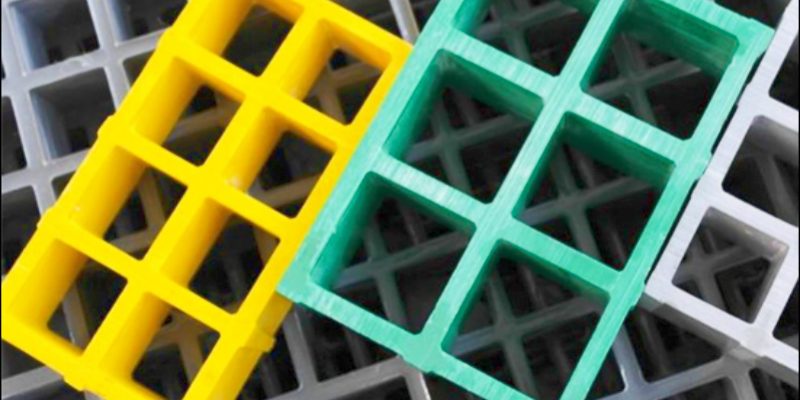
Essential Guide to FRP Pipe Piles for Construction
FRP Grating Weight by Thickness and Size
The frp grating weight is a fundamental characteristic that determines many aspects of its usage, including structural integrity, ease of handling, and overall costs. Weight varies significantly based on the size and thickness of the FRP grating; therefore, understanding the standard dimensions and associated weights is essential for proper application. Below are detailed specifications and data points related to the standard FRP grating dimensions, providing insight into the weight differences resulting from different thicknesses.
Specification of Standard FRP Grating Dimensions:
When specifying FRP grating for projects, it’s vital to consider the common panel sizes and thicknesses that manufacturers offer, as these affect frp panel installation processes. Standard measurements tend to be widely accepted for various industrial and architectural needs due to their compatibility with existing structures and installation requirements.
- Common Panel Size: The 3660×1220 mm panel size is frequently utilized across multiple industries due to its efficient coverage and adaptability to a vast range of applications.
- Optimized Dimensions: Standard FRP grating dimensions are selected to balance material use and performance, providing high strength-to-weight ratios for various installations.
- Customizable Features: The flexibility in customizing panel sizes and shapes ensures that specific project requirements are met, making FRP grating an adaptable solution for a diversity of structural considerations.
Weight per Square Meter for Different Thicknesses
The weight of FRP grating per square meter is affected by its thickness. More material equates to more weight, which impacts the handling and support structures required. Below are specific figures for three standard thicknesses, offering a point of reference for the consideration of weight in planning and design.
3660×1220 mm at 25 mm Thickness
- Weight: 12.5 kg/sqm
3660×1220 mm at 30 mm Thickness
- Weight: 15 kg/sqm
3660×1220 mm at 38 mm Thickness
- Weight: 18.5 kg/sqm
Considerations Beyond Weight
While the frp grating weight is a critical factor, there are additional considerations that go beyond the mere load to ensure that the FRP grating meets all the project requirements efficiently and effectively.
- Structural Performance: The weight of FRP grating has a direct correlation with its load-bearing abilities, affecting safety and compliance with industry standards.
- Ease of Installation: The weight informs the installation process; heavier gratings may demand more workforce or machinery, impacting project time and cost.
- Durability: Grating weight, which is indicative of the material volume, influences resistance to wear and tear, thus affecting the longevity of the installation.
- Cost Efficiency: Heavier and thicker gratings will have higher material costs, but they can also lead to savings in terms of longevity and reduced maintenance.
- Sustainability: Weight considerations affect not just economic factors but also environmental aspects—lighter grating may mean reduced carbon footprints and better environmental sustainability.
Selecting the right frp grating weight by thickness and size involves an assessment of factors such as required strength, cost implications, installation logistics, and long-term maintenance. These considerations ensure an installation that is not only cost-effective but also compliant with safety regulations and environmentally responsible.
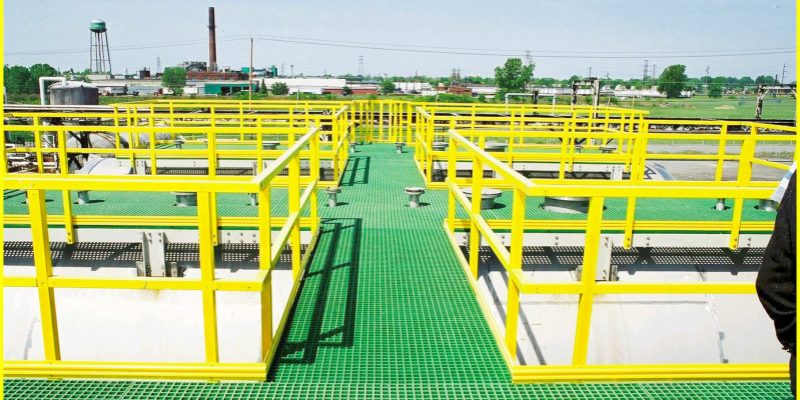
FRP Grating Weight Chart: A Detailed Guide
When working with FRP (Fiber Reinforced Plastic) grating, understanding the frp grating weight is crucial for various aspects of project planning and implementation. The following sections delve into how to use an FRP grating weight chart and the importance of consulting detailed specification PDFs for comprehensive data on the product.
Utilizing an FRP Grating Weight Chart
A weight chart serves as an indispensable tool for engineers, architects, and installers to quickly obtain the frp grating weight based on different sizes and thicknesses. Here’s how to use such a chart effectively:
- Identify the Panel Size: Locate the specific panel size relevant to your project within the chart for accurate weight estimation.
- Check Thickness: Grating comes in various thicknesses, each having a different weight per unit area – find the required thickness in the chart.
- Understand the Units: Ensure you understand the measurement units (e.g., kilograms per square meter) used in the chart for accurate calculations.
- Determine Load Requirements: Use the chart to gauge if the selected grating weight complies with the load-bearing needs of your project.
- Calculate Total Weight: Multiply the chart data by the total area of grating you plan to use to estimate the cumulative weight.
- Plan Installation: Assess whether additional manpower or equipment is required for installation based on the frp grating weight.
- Budget Considerations: Factor in transport costs and handling fees which can be affected by the weight of your selected FRP grating.
- Safety Precautions: Use the weight chart to ensure the safe handling of the material at the job site, adhering to OSHA regulations and other safety standards.
- Verify with Manufacturer: Always confirm the weight data with the manufacturer, as there may be slight variations depending on the FRP grating’s composition.
Comprehensive FRP Grating Specification PDFs
While charts provide a quick reference, detailed frp grating weight specifications are typically available as PDF documents, which are crucial for a detailed understanding of the products:
- Access Complete Data: Specification PDFs contain in-depth information that might not be present in summary weight charts.
- Cross-reference Materials: Compare weights of different composite materials used in FRP grating manufacturing.
- Corrosion Resistance Information: Specification PDFs detail how different weights and materials withstand corrosive environments.
- Temperature Tolerance: Discover the weight and specification variations for FRP grating products designed for high or low-temperature applications.
- Find Customization Options: Learn about the potential for custom weights and sizes for specialized projects from your frp grating manufacturer.
- Get Installation Guidelines: Specification PDFs often include recommendations for installation based on weight and size.
- Warranty and Compliance: The documents list warranty information and compliance with international standards, which can be tied to weight specifications.
- Maintenance Instructions: Learn how the frp grating weight affects maintenance procedures and schedules.
- Quality Assurance: Detailed specifications provide assurances on quality control processes during manufacturing, impacting the weight and reliability of the FRP grating.
Using both a quick reference weight chart and detailed specification PDFs ensures that you have all the necessary information to choose the right FRP grating for your needs, understanding the frp grating weight, and implementing it correctly within your project.
Calculating Specific FRP Grating Weights
When planning and specifying materials for construction projects involving Fiber Reinforced Plastic (FRP) grating, accurately calculating the frp grating weight is essential for logistics, installation, and structural design purposes. One of the most efficient methods for obtaining these weights is by using FRP grating weight calculators, which simplify the process by converting your entered dimensions into weight using standardized densities.
Introduction to Using FRP Grating Weight Calculators
FRP grating weight calculators are indispensable tools designed to aid architects, engineers, and project managers. Here are key points on their utility:
- Accessibility: These calculators are often available online, offering users the convenience to access them at any time during the planning or installation phase.
- User-Friendly Interface: Most weight calculators have a simple, intuitive interface where users can easily enter their specific measurements and requirements.
- Material Selection: Users can select from different grades or types of FRP material, each having a unique density affecting the overall weight.
- Customization: Calculators allow for the input of custom dimensions, accommodating a wide range of project specifications.
- Instantaneous Results: Upon entering the required data, the calculator immediately provides the frp grating weight in kilograms or other preferred units.
- Accuracy: Although not a substitute for manufacturer specifications, these calculators offer a high degree of accuracy, greatly assisting in preliminary planning.
How to Input Dimensions and Get the Weight in kg or Other Units
Calculating the frp grating weight using a calculator involves several straightforward steps:
- Select the FRP Grade: Begin by choosing the specific type or grade of FRP grating you plan to use, as different materials have different weights.
- Enter Dimensions: Input the length, width, and thickness of the FRP grating panels you intend to use in the project. Measurements should be as accurate as possible for precise calculations.
- Choose the Unit of Measurement: Most calculators allow users to select the preferred unit of measurement for both the input dimensions and the output weight, ensuring compatibility with project specifications.
- Specify Quantity: If you need to calculate the weight of multiple panels, specify the quantity to get the cumulative weight.
- Submit for Calculation: After entering all necessary information, submit it for calculation. The frp grating weight will be displayed instantaneously.
- Conversion Features: Some calculators also offer the option to convert the weight into different units, such as converting kilograms to pounds, facilitating ease of use for international projects.
Utilizing an FRP grating weight calculator streamlines the preliminary stages of project planning, offering a quick and efficient method to estimate the weight of FRP grating materials based on specific dimensions and quantities. This process ensures that project managers can make informed decisions regarding logistics, installation requirements, and structural support, contributing to the overall success and efficiency of construction projects.
Weight Comparison: FRP vs. Other Materials
In the world of construction and industrial applications, choosing the right material is paramount for the success and durability of any project. Among these materials, Fiber Reinforced Plastic (FRP) has become increasingly popular due to its unique properties, especially its weight advantage. Understanding the frp grating weight compared to other materials is crucial for engineers and project managers when making decisions. Below is a detailed comparison focusing on FRP grating vs. metal grating, along with the benefits of opting for the lighter FRP material.
| Material Type | Average Weight per Square Meter (kg/m²) |
|---|---|
| FRP Grating | 12 - 15 |
| Steel Grating | 30 - 35 |
| Aluminum Grating | 10 - 15 |
Note: The values provided in the table are averages and can vary depending on the specific composition and dimensions of the grating.
Benefits of Lighter Weight in FRP
The frp grating weight offers several advantages over heavier materials, which include but are not limited to:
- Easier Handling and Installation: The reduced weight of FRP grating makes it easier to transport and maneuver during installation. This can significantly reduce labor costs and time.
- Lower Transportation Costs: Lighter materials are less expensive to ship, offering savings on logistics, especially for large-scale projects.
- Enhanced Safety: The risk of injuries during handling and installation is lowered with lighter materials. FRP’s weight contributes to safer construction sites.
- Increased Strength-to-Weight Ratio: Despite its lighter weight, FRP demonstrates superior strength and durability, often outperforming metal in terms of longevity and resistance to environmental factors.
- Reduced Structural Load: Using FRP can reduce the load on supporting structures, which is a critical consideration in retrofit projects and structures with load-bearing constraints.
- Corrosion Resistance: Along with being lighter, FRP is inherently resistant to corrosion, meaning it maintains its weight integrity over time, unlike metal grating weight, which can increase due to rust accumulation.
- Lower Lifetime Maintenance Costs: Given its resistance to corrosion and higher durability, FRP grating demands less maintenance over its lifespan, translating to long-term savings.
- Versatility: The lighter weight does not compromise FRP’s adaptability. It can be used in various environments and applications where metal may not be suitable, such as chemical plants or coastal areas.
Understanding the frp grating weight in comparison to other materials highlights the significant advantages FRP offers, particularly in scenarios where weight impacts the overall cost, safety, and feasibility of projects. The choice of FRP grating is validated not only by its lightweight characteristics but also by its performance, resistance to environmental stresses, and cost-effectiveness during the lifetime of a project.
How FRP pipe shields protect pipes from corrosion and damage
Detailed FRP Grating Specifications: FRP Grating Weight
Selecting the right FRP grating for a project requires detailed technical information that goes beyond just knowing the frp grating weight. Access to comprehensive FRP grating specifications is essential for engineers, architects, and project managers to make informed decisions. Below, find guidance on how to access detailed FRP grating specification PDFs and the importance of relying on manufacturer-specific data.
How to Access Comprehensive FRP Grating Specifications
- Manufacturer’s Website: The primary source for detailed specifications is directly from the FRP grating manufacturer’s website. Most manufacturers provide downloadable PDF files that include complete specifications.
- Technical Consultations: Contacting the manufacturer for a consultation can provide you access to not only their standard specification documents but also any custom solutions that may suit your project.
- Industry Publications: Websites and magazines focused on construction and industrial materials often feature comprehensive guides and specifications for materials, including FRP grating.
- Trade Shows and Expos: Attending industry events where FRP grating manufacturers display their products allows direct access to technical literature and firsthand expert advice.
- Engineering Libraries: University or public technical libraries may have subscriptions to databases or archives of industrial material specifications, including FRP grating.
- Professional Networks: Asking within your professional network or on professional networking sites can yield recommendations for where to find the most comprehensive and up-to-date FRP specifications.
- Online Forums: There are many online forums and discussion boards where professionals share resources, including specification documents.
- Regulatory Bodies: Organizations that set standards and regulations for construction materials often have lists of resources or links to where specifications can be found.
The Importance of Manufacturer-Specific Data
When considering frp grating weight and other specifications, relying on manufacturer-specific data is critical for several reasons:
- Accuracy: Manufacturers provide the most up-to-date and precise specifications for their products, ensuring you base your decisions on accurate information.
- Product Variability: FRP grating can vary significantly between manufacturers in terms of composition, weight, strength, and other critical specifications.
- Warranty Information: Using the product in accordance with the manufacturer’s specifications is often a warranty requirement.
- Custom Solutions: Manufacturers can offer custom specifications for unique project needs, which can significantly affect the product’s performance and suitability.
- Compliance and Standards: Manufacturer specifications include details on compliance with national and international standards, which is crucial for project approvals and certifications.
- Technical Support: Accessing specifications directly from the manufacturer usually comes with the option for technical support, providing further clarification and assistance in product selection and use.
Acquiring detailed FRP grating specifications, particularly with a focus on frp grating weight, is a step toward ensuring the success and longevity of a project. Manufacturer-specific data offers the accuracy and detail required to make informed choices that lead to optimal outcomes in construction and industrial applications.
Maximizing Benefits While Minimizing FRP Grating Weight
The innovative design and composition of Fiber-Reinforced Plastic (FRP) Grating offers a compelling array of advantages for a wide range of applications. Notably, the lightweight nature of FRP grating significantly impacts its performance, installation, and overall project costs. Here, we explore at least ten crucial benefits derived from minimizing frp grating weight without compromising on quality and durability.
- Ease of Installation: The lightweight characteristic of FRP grating simplifies handling, positioning, and securing during installation processes. Reduced frp grating weight allows for faster installation with minimal labor, decreasing the total installation time and labor costs.
- Reduction in Shipping Costs: Lightweight FRP grating translates into lower shipping costs. Since the weight is a critical factor in determining freight charges, the lower weight of FRP grating can substantially reduce transportation expenses, making it a cost-effective solution for projects worldwide.
- Lower Load on Supporting Structures: The reduced weight of FRP grating exerts less stress and load on the supporting structures. This advantage is particularly critical in applications where structural integrity and load-bearing capacity are paramount concerns.
- Increased Safety: Handling lighter grating minimizes the risk of injuries during transportation and installation. Lighter materials are less likely to cause strain or accidents, promoting a safer work environment.
- Enhanced Durability: Despite its light weight, FRP grating offers exceptional durability against corrosion, impact, and wear. This resilience makes it a cost-effective alternative over the long term, as it requires less maintenance and replacement.
- Improved Resistance to Corrosion: The composition of FRP grating provides inherent resistance to a wide range of chemicals and environmental conditions. This characteristic ensures longevity and performance in harsh or corrosive environments, where traditional materials might fail.
- Adaptability to a Wide Range of Applications: The versatility and adaptability of lightweight FRP grating allow for its use in diverse settings – from industrial platforms, walkways, and drainage covers to architectural applications.
- Customizability: FRP grating can be easily cut and shaped on-site using standard tools, enabling customization and adjustments during installation without the necessity for heavy machinery or specialized equipment.
- Thermal Insulation: FRP materials exhibit low thermal conductivity, making FRP grating an excellent insulator. This feature can be particularly beneficial in environments where thermal resistance and energy efficiency are desired.
- Aesthetic Versatility: Available in various colors and finishes, lightweight FRP grating can meet both functional and aesthetic requirements, blending seamlessly with different architectural and design needs.
By focusing on reducing the frp grating weight, manufacturers have successfully merged robustness, cost-effectiveness, and versatility into one product. This innovative approach ensures that lightweight FRP grating remains a preferred choice for industrial, commercial, and architectural projects, providing a multitude of benefits without compromising on strength or performance.
The best designs for storing and transporting FRP pipe racks
Considerations for Strength, Durability, and Environment: Detailed Look
- Material Composition: FRP grating is made from various resin types, each offering different levels of strength, durability, and resistance to environmental factors. Choose a resin type that matches your application’s specific needs.
- Quality and Standards: Opt for high-quality FRP grating that adheres to industry standards. This ensures you receive a product capable of withstanding the demands of your application without unnecessary weight.
- Maintenance Requirements: Consider the maintenance efforts required to keep the FRP grating in optimal condition. Some materials may be more resistant to dirt, grime, and chemicals, reducing the need for frequent cleaning or replacement.
- Long-Term Cost Savings: Investing in slightly heavier, more durable FRP grating might offer long-term cost savings. More robust materials often have a longer lifespan and can withstand harsher conditions without significant wear.
- Impact of Environmental Conditions: Environmental factors such as moisture, chemical exposure, and temperature extremes can affect the performance of FRP grating. Select a grating type designed to endure these conditions without degrading.
- Flexibility in Design and Customization: Some applications may require custom sizes or shapes, impacting the choice of FRP grating. Consider suppliers who offer customization options that meet your performance and weight requirements.
Selecting the right FRP grating encompasses more than just considering the frp grating weight. It’s about balancing weight with the grating’s strength, durability, environmental suitability, and compliance with safety standards. Thoroughly evaluate each of these factors to ensure the chosen FRP grating meets the unique demands of your project.
How to Choose FRP Grating Weight Specification
Selecting the correct FRP (Fiber Reinforced Plastic) grating weight specification involves evaluating several key factors to ensure optimal performance, durability, and cost-effectiveness. Below is a step-by-step guide to help you make the right choice:
What Are Application Requirements
- Load Capacity:
- Determine the type and amount of load the grating will bear:
- Pedestrian Traffic: Lighter gratings are sufficient for walkways and platforms.
- Heavy Equipment or Vehicular Loads: Opt for heavier, higher-strength gratings.
- Check the grating’s load rating for both uniform loads (e.g., equipment) and point loads (e.g., concentrated force from machinery).
- Determine the type and amount of load the grating will bear:
- Span Length:
- A longer span typically requires thicker and heavier grating to prevent deflection and maintain structural integrity.
- Use manufacturer-provided deflection charts to match weight specifications with span length and load requirements.
- To accurately determine the appropriate grating size and strength, a FRP grating deflection calculation is essential.This calculation helps assess how much the grating will bend under a given load based on the span length, material properties, and load distribution.
Consider Environmental Conditions
- Corrosion and Chemical Exposure:
- In harsh environments (e.g., chemical plants, marine settings), prioritize gratings with specific resin types that are resistant to the chemicals present.
- Heavier gratings may include additional layers of protection or higher-quality materials.
- Temperature Variations:
- High temperatures may reduce the strength of FRP grating. Ensure the weight specification accommodates heat-resistant resins for such conditions.
- UV Resistance:
- If used outdoors, ensure the grating has UV stabilizers. This might affect weight slightly but ensures longevity.
Evaluate Installation and Handling
- Ease of Installation:
- Lightweight FRP grating is easier to handle, reducing labor and equipment costs.
- If the grating is part of a modular system or will be frequently relocated, prioritize lower weight specifications.
- Accessibility of the Installation Site:
- In areas with limited access (e.g., elevated platforms or confined spaces), lightweight options are advantageous.
Review Structural Design
- Thickness:
- Thicker gratings are heavier but provide higher strength. Select the appropriate thickness based on load and span requirements.
- Panel Size:
- Larger panels are typically heavier but reduce the need for multiple joints and supports.
- Grating Type:
- Molded Grating: Heavier, suitable for multi-directional strength requirements.
- Pultruded Grating: Lighter, ideal for directional loads and long spans.
Compliance with Standards
- Ensure the chosen FRP grating meets industry standards (e.g., OSHA, ANSI, or ISO) for safety and performance.
- Some applications, such as those in the food or pharmaceutical industries, may require specific certifications, which might influence weight specifications.
Cost Considerations
- Material Costs:
- Heavier gratings typically cost more due to the increased use of fiberglass and resin. Balance performance needs with budget constraints.
- Transportation Costs:
- Lighter gratings are less expensive to ship, which can significantly reduce overall project costs for large installations.
Long-Term Performance
- Durability:
- Heavier gratings may offer better impact resistance and longer service life in high-wear areas.
- Maintenance:
- Lightweight gratings with sufficient strength reduce maintenance costs due to easier handling and lower risk of structural failure.
FAQs about FRP Grating Weight
The weight of FRP (Fiber Reinforced Plastic) grating per meter varies widely depending on the thickness, density, and type of grating. For instance, standard dimensions for FRP grating can be 3660×1220 mm with thicknesses like 25 mm, 30 mm, and 38 mm. Based on a common specification, the weight per square meter might be approximately 12.5 kg for 25 mm thickness, 15 kg for 30 mm thickness, and 18.5 kg for 38 mm thickness. However, these figures can change based on the specific composition and design of the FRP grating used. Manufacturers often produce FRP grating with varying densities to suit different applications, making it crucial to consult specific product specifications for accurate weight measurements.
The weight of FRP in kilograms varies depending on its form (grating, sheets, rods, etc.), its thickness, and its density. For FRP grating, as mentioned, weights could range around 12.5 kg to 18.5 kg per square meter based on a thickness of 25 mm to 38 mm, respectively. This means for a standard size sheet of 3660×1220 mm, the weight could significantly differ. It’s critical to note that these figures are examples based on specific standard dimensions and thickness. The actual weight would need to be calculated or verified based on the exact specifications of the FRP material in question.
FRP mesh, a form of FRP grating designed with an open mesh pattern, tends to be lighter compared to solid FRP grating due to the reduced material usage. However, the weight can still vary depending on the mesh size, thickness, and material composition. Generally, for similar thicknesses, FRP mesh might weigh slightly less than its solid counterpart due to the spaces within the mesh. Without specific dimensions and density, it’s challenging to provide an exact number, but manufacturers’ specifications should offer the necessary details to determine the precise weight of FRP mesh for project requirements.
FRP is often selected for applications where a lighter weight material compared to metal is desirable. When comparing FRP to aluminum, FRP can be lighter or similar in weight depending on the type and specifications of the material used. Aluminum has a density of about 2.7 g/cm³, making it one of the lighter metal materials available. The lightweight nature of FRP is one of its significant advantages, especially for structures where reduced weight leads to easier handling and lower transportation costs. However, for a direct comparison, specifics such as the type of FRP, its thickness, and density are crucial. In many cases, FRP provides a competitive lightweight option with the added benefits of corrosion resistance and higher strength in certain applications.
The weight of a sheet of FRP (Fiber Reinforced Plastic) varies depending on its thickness, dimensions, and specific material composition. Typically, FRP sheets weigh around 1.5 to 4 pounds per square foot, depending on the laminate and fiber content. For example, a 4′ x 8′ FRP sheet with a 1/8″ thickness might weigh approximately 40–60 pounds. FRP is known for being lightweight compared to materials like steel or concrete while still providing excellent strength and durability.
FRP grating typically has a density of approximately 1.4 to 2.0 grams per cubic centimeter (g/cm³), depending on the resin and fiber used in its composition. This density is significantly lower than that of traditional materials like steel, which can have a density of about 7.8 g/cm³. This lightweight property of FRP grating makes it an excellent choice for applications where weight reduction is critical, such as in marine, industrial, and architectural settings.
The weight of FRP mesh depends on the mesh size, strand thickness, and material type. On average, FRP mesh weighs between 2 to 5 pounds per square foot. This weight range makes FRP mesh much lighter than comparable metal meshes, while still offering corrosion resistance, durability, and ease of installation. The exact weight should be specified in product documentation or by the manufacturer for precise applications.
The weight of grating depends on the material and type. For FRP grating, the weight typically ranges from 3 to 6 pounds per square foot, depending on the thickness, panel size, and configuration (e.g., molded vs. pultruded). Steel grating, by contrast, can weigh significantly more—around 10 to 15 pounds per square foot for standard designs. FRP’s lightweight yet durable nature makes it an advantageous alternative in many environments.
FRP grating thickness commonly ranges from 1 inch to 2 inches, depending on the application and load requirements. Molded grating often comes in standard thicknesses like 1″, 1-1/2″, or 2″, while pultruded grating can have custom dimensions. The thickness of the grating is directly tied to its load-bearing capabilities and must be selected based on structural needs.
No, fiberglass (FRP) weighs significantly less than steel. Fiberglass has a density of around 1.5 to 2.0 g/cm³, while steel has a density of approximately 7.8 g/cm³. This means that FRP is about 4 to 5 times lighter than steel, making it a preferred material for applications requiring lightweight and corrosion-resistant properties. While steel may have higher tensile strength, FRP provides an excellent strength-to-weight ratio.

As the editor of GangLong Fiberglass, I have years of experience and in-depth research, focusing on cable tray products, fiberglass solutions, and grille systems. I incorporate years of industry insights and practical experience into every content, committed to promoting the progress of the industry. At GangLong Fiberglass, my commitment is reflected in every product, from innovative cable trays to durable fiberglass solutions and sturdy grille systems. As an authoritative voice in the industry, my goal is to provide valuable information to professionals and businesses and promote forward-looking solutions.

